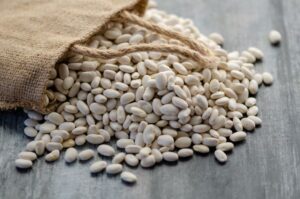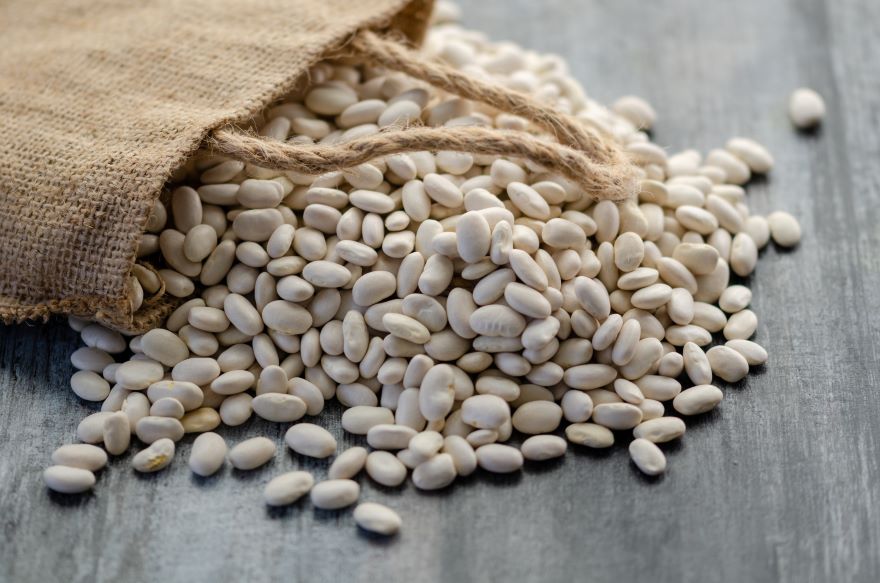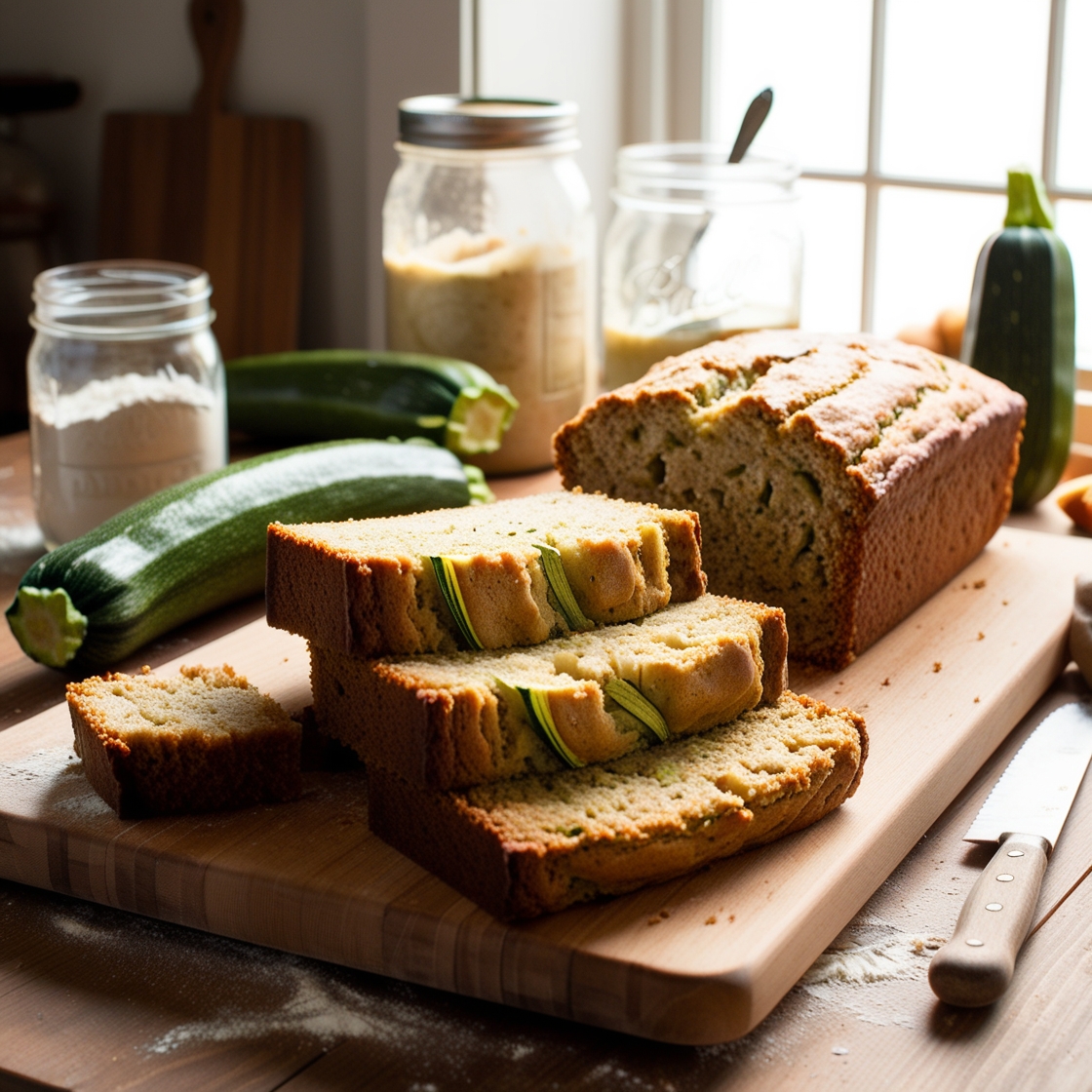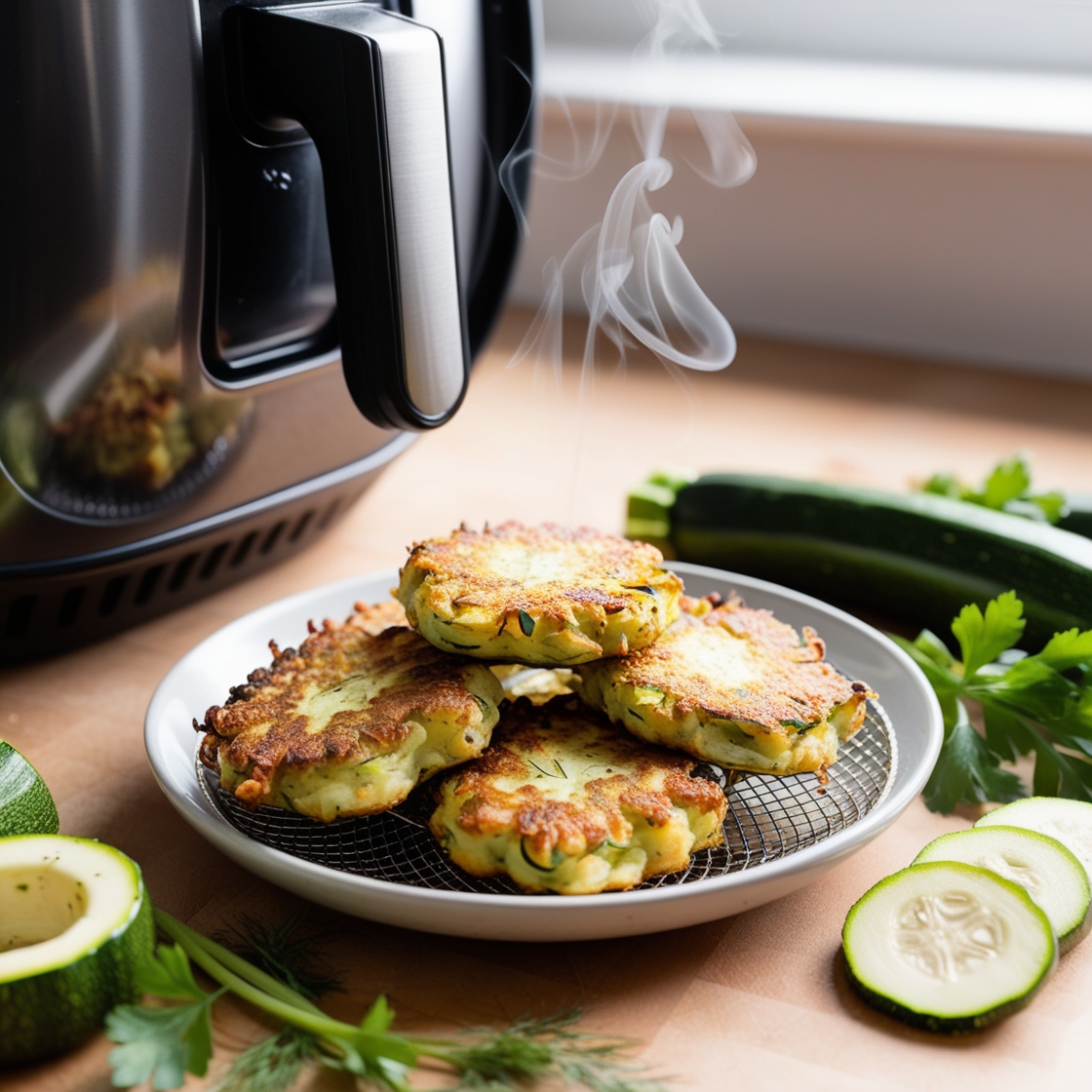Navy beans, small yet mighty legumes, have been sustaining people with their nutritional value and versatility in various cuisines. The kitchen smells awesome when navy beans are bubbling away on the stove! My grandma used to cook these little white beans with chunks of ham on cold winter days. The pot would sit there for hours, making the whole house smell like heaven. Us kids would peek under the lid every so often, hoping they’d be done soon. What are navy beans?
Beans get a bad rap sometimes, but here’s something wild – in those places where people live to be exceptionally long-lived in the Blue Zones, beans are an important part of their daily diet. Not fancy health foods or expensive supplements. Beans are a staple they consume regularly. Most of these old-timers don’t even think it’s special. When researchers get all excited asking about longevity secrets, the locals look confused and just point to their garden plots. Like, we grow food and eat it. Who knew that was the secret?

Don’t let these humble white beans deceive you. They might look boring as heck, but they’re seriously impressive little things. Loaded with stuff your body actually needs. I started buying them in bulk after I graduated because ramen gets old fast, and now they’re always in my cupboard. Cheap, filling, versatile – what’s not to like?
Why Do They Have That Weird Name?
So why are they called “navy beans” when they’re white, not blue? Turns out these beans were standard fare on U.S. Navy ships back in the 1800s. Smart choice – they last forever without going bad and keep sailors fed when fresh food ran out during those long ocean journeys.
You’ll hear old-timers call them different names: “Boston beans,” “pea beans,” or “yankee beans.” All the same thing! Native to the Americas, these beans were perfect for feeding big groups of hungry people without breaking the bank.
I stumbled across this cool fact while helping clean out my grandfather’s attic – Australian farmers grew tons of these beans during World War II specifically for American soldiers in Queensland. The military basically lived on these things – cheap, filling, and keeps you going.
There’s even a navy bean soup that’s been on the U.S. Senate dining room menu forever. My grandma had a similar recipe scribbled in her old recipe box – stained and worn from years of use. Some traditions just stick around, I guess.
What Are Navy Beans? The Nutrition Stuff You Should Know
I nearly fell off my chair when I looked up the nutrition facts for navy beans. No joke! For such a cheap, basic food, they’re absolutely LOADED with good stuff. Here’s what makes them special:
- Protein that actually matters: Half a cup gives you about 7.5g of protein – pretty much the same as an egg! Been trying to cut back on meat? These little guys help fill the gap.
- Carbs that don’t mess you up: Unlike the sugar crash you get from processed junk, navy beans have around 23.7g of complex carbs per half-cup. They burn slowly, so you’re not hungry again in 20 minutes.
- Fiber for days: Holy moly – 9.6g of fiber in a half-cup serving! That’s almost half what you need all day. My stomach definitely notices when I skip beans for too long, if you know what I mean.
- Practically zero fat: Just 0.6g fat per serving. I’ve swapped them for meat in chili and nobody complained (or even noticed, to be honest).
- Budget-friendly calories: Only 128 calories per serving. Back when I was broke after paying rent, these beans saved me from another sad night of ramen noodles.
- Vitamins & minerals galore: Tons of folate (good for your cells), iron (when I skip this I get super tired), calcium (not just in milk!), and potassium (helps with blood pressure – mine runs high so I need this).
- Won’t spike your blood sugar: No crazy blood sugar rollercoaster. Just steady energy that actually lasts through the afternoon.
Honestly, adding these beans to my diet a couple times a week has made a huge difference. My grocery bill is lower and I stay full way longer after meals.
Our Recommended Navy Bean Brand
Elevate your favorite recipes with Food To Live Organic Navy Beans. These premium-quality beans are carefully selected and packaged to ensure freshness and flavor. Rich in protein, fiber, and essential nutrients, these navy beans are perfect for a wide range of dishes, from comforting soups and stews to classic baked beans.
- ✔️ ORGANIC & NON-GMO: Food to Live Organic Navy Beans are certified organic and non-GMO, ensuring that they are free from harmful contaminants and genetically modified organisms.
- ✔️ PLANT PROTEIN POWERHOUSE: With almost 8g of plant-based protein per ½ cup serving, Navy Beans are an excellent source of protein for vegetarians and vegans.
- ✔️ HIGHLY NUTRITIOUS: Navy Beans are rich in Iron, Magnesium, Copper, Folate, and B vitamins. They are low in fats and high in plant-based protein and dietary fiber.
- ✔️ VERSATILE INGREDIENT: With their mild and creamy flavor, Navy Beans are a delicious and versatile ingredient that can be used in a wide range of dishes, including soups, stews, salads, dips, and chilis.
- ✔️ LONG SHELF LIFE: Organic Navy Beans from Food to Live have a long shelf life, up to 4 years if stored in a cool, dry place. Buy in bulk and ensure that you always have a nutritious and versatile ingredient on hand.
Navy Beans & Your Health: What Research Actually Shows
So what happens when you actually eat these beans regularly? Some pretty cool stuff, according to real research:
- Better heart health: The soluble fiber actually grabs onto cholesterol in your gut and carries it out before your body absorbs it. Studies show people who eat beans regularly have lower bad cholesterol and less inflammation.
- Keeps your BP in check: The potassium in navy beans helps balance out all the sodium most of us eat. I started tracking my blood pressure last year , and noticed it runs lower on days after I’ve had beans.
- Weight control without hunger: That combination of protein and fiber is magic for staying full. When I include beans in lunch, I’m not ransacking the snack drawer at 3 pm. Research backs this up – people snack way less after bean-based meals.
- Steadier blood sugar: Studies found that meals with beans don’t cause the same spikes as other starchy foods. My friend with diabetes swears by them.
- Digestive happiness: The fiber keeps things moving, while the resistant starch feeds the good bacteria in your gut. After a course of antibiotics last winter, beans helped get my system back to normal faster than expected.
- Living longer: Those super-old folks in Blue Zones? Beans are at almost every meal. Not processed “health foods” – just regular beans. Something that simple might actually add years to your life.
- Cancer-fighting potential: Some research suggests the antioxidants and resistant starch might help reduce colon cancer risk. While more studies are needed, I’m all about prevention and making smart dietary choices.
- Brain benefits: The steady energy helps avoid those focus-killing crashes, and the folate supports brain function. I definitely notice clearer thinking on bean-eating days versus fast food lunch days.
Although there’s plenty of solid, science-backed research out there, the evidence supporting beans—especially navy beans—stands out for being both strong and consistent.
For those who enjoy the slow, soulful process of simmering navy beans to perfection, the Le Creuset Signature Enameled Cast Iron Dutch Oven is the ultimate kitchen investment. This top-tier pot ensures even heat distribution for rich, flavorful meals every time. Ideal for long, slow cooking, this Dutch oven excels at maintaining the ideal temperature while making your navy beans soft, tender, and full of flavor. Whether you’re crafting a traditional bean soup or a creative new dish, Le Creuset guarantees a kitchen experience that feels as luxurious as it tastes.

Le Creuset Enameled Cast Iron Signature Round Dutch Oven with Lid, 5.5 Quart, Flame
- Enameled cast iron delivers superior heat distribution and retention
- Ready to use, requires no seasoning
- Easy-to-clean and durable enamel resists dulling, staining, chipping and cracking
- Light colored smooth interior enamel allows easy monitoring of cooking progress
What Are Navy Beans? Kitchen Magic Beyond Basic Beans
Most people think navy beans are pretty boring – just something healthy you force yourself to eat. That couldn’t be further from my experience. After years in the kitchen, I’ve found these little white beans can do almost anything. Seriously, they work in so many different recipes that you’d never get bored:
Beyond Traditional Recipes
Navy beans excel in contemporary cooking applications that go far beyond their traditional uses:
- Bean Spreads and Dips: Pureeing navy beans with roasted garlic, quality olive oil, lemon juice, and fresh herbs creates a smooth, creamy spread that makes an excellent appetizer. The mild flavor of navy beans provides a perfect canvas for Mediterranean seasonings.
- Hearty Salads: Navy beans hold their shape well in salads while absorbing dressing flavors. A combination of navy beans, cherry tomatoes, cucumber, feta cheese, and lemony herb dressing makes a substantial yet refreshing dish perfect for warm weather.
- Baking Substitute: These beans can be pureed and used to replace some of the fat in baking recipes. In brownies, for example, they add moisture and nutrition while their flavor disappears completely, resulting in a fudgy texture with added protein and fiber.
- Creative Main Dishes: Spreading seasoned, mashed navy beans on flatbread with toppings like caramelized onions, roasted peppers, and a light sprinkle of cheese creates a protein-rich alternative to traditional pizza that’s both satisfying and nutritious.
Navy beans are remarkably versatile, bridging traditional recipes and modern innovations. Their ability to absorb flavors while maintaining a pleasant texture makes them valuable for creative cooking.

What Are Navy Beans? Foolproof Preparation Techniques
After cooking thousands of pots of beans (including plenty of failures), I’ve developed foolproof methods that consistently deliver perfect results:
Back-to-Basics Methods
Seasoning Secrets: Many experienced cooks recommend adding salt and acidic ingredients only after beans have softened. This technique prevents tough skins and significantly reduces cooking time. Learning to properly time the addition of seasonings can truly transform your results when cooking beans.
Smart Sorting: Never skip the sorting step! Spread beans on a baking sheet in a single layer with good lighting. This visual inspection has saved my dental work more than once by catching tiny stones that occasionally sneak into even premium beans.
Soaking Debates Settled: After testing every method imaginable, traditional overnight soaking still wins. Cover beans with water by two inches, add a ¼ teaspoon of baking soda (this alkalinity helps soften stubborn bean skins), and let them rest 8-12 hours. No time? The quick-soak method works in a pinch: cover with water, boil for two minutes, then remove from heat and let sit covered for one hour.
Low-and-Slow Cooking: My early bean failures came from impatience and high heat. The secret? Gentle simmering rather than vigorous boiling preserves their shape while developing creamy interiors. Think of it as bean meditation—slowing down yields the best results.

Modern Time-Savers
- Pressure Cooker Magic: For last-minute meals, pressure cookers are game-changers. After proper soaking, navy beans cook in 6-8 minutes at high pressure with a natural release. During particularly busy teaching semesters, my electric pressure cooker saved dinner countless times.
- Batch Cooking Brilliance: Sunday bean sessions changed my meal prep forever. Cooking double batches and freezing in recipe-sized portions (about 1½ cups, equivalent to a can) works remarkably well. Unlike many foods, navy beans maintain their texture when thawed, making weeknight cooking nearly instant.
- Digestive Comfort Tricks: After hosting a bean-centered dinner party where several guests experienced, ahem, digestive distress, I researched solutions extensively. Always discard soaking water and rinse thoroughly before cooking. Adding bay leaf, fennel seed, or epazote during cooking significantly improves digestibility for sensitive systems. These additions have converted many former bean-avoiders into enthusiasts.
Through countless kitchen experiments, I’ve found that investing time in proper preparation yields navy beans with superior texture and digestibility, making them more likely to become kitchen staples rather than forgotten pantry items.
If you’re a busy cook looking for an efficient, stress-free way to prepare navy beans (and other dishes), the Instant Pot Duo 7-in-1 Electric Pressure Cooker is a game-changer. This high-quality appliance speeds up cooking times without compromising flavor or texture. Whether you’re cooking navy beans or preparing a hearty soup, the Instant Pot makes everything faster and more convenient. Plus, with multiple functions like slow cooking, sautéing, and even yogurt making, it’s a versatile kitchen tool you’ll use every day.

Instant Pot Duo 7-in-1 Electric Pressure Cooker, Slow Cooker, Rice Cooker, Steamer, Sauté, Yogurt Maker, Warmer & Sterilizer
- 7-IN-1 FUNCTIONALITY: Pressure cook, slow cook, rice cooker, yogurt maker, steamer, sauté pan and food warmer.
- QUICK ONE-TOUCH COOKING: 13 customizable Smart Programs for pressure cooking ribs, soups, beans, rice, poultry, yogurt, desserts and more.
- COOK FAST OR SLOW: Pressure cook delicious one-pot meals up to 70% faster than traditional cooking methods or slow cook your favorite traditional recipes – just like grandma used to make.
- QUICK AND EASY CLEAN UP: Finger-print resistant, stainless-steel sides and dishwasher-safe lid, inner pot, and accessories.
What Are Navy Beans? Their Place in Today’s Eating Styles
Navy beans have a remarkable environmental profile. Replacing just two meat-based meals weekly with bean alternatives can reduce food-related emissions by nearly 20%. Their minimal water requirements and low carbon footprint make them environmental champions compared to animal proteins.
Various eating approaches embrace navy beans for different reasons:
- Mediterranean Diet: In Mediterranean cuisine, beans appear daily alongside olive oil, vegetables, and whole grains. This combination provides complete nutrition while supporting heart health in a delicious, satisfying way.
- Gluten-Free Options: Navy bean flour offers a protein-rich alternative for gluten-free baking. The higher protein content improves texture compared to rice-based alternatives, creating baked goods with better structure and mouthfeel.
- Diabetes-Friendly Food: Nutritionists highlight navy beans’ exceptional glycemic properties. Their fiber and resistant starch moderate blood sugar responses, making them suitable for those monitoring glucose levels.
- Budget-Friendly Protein: At roughly 25 cents per serving when purchased dried, navy beans provide quality nutrition regardless of financial constraints. They’re excellent protein extenders that help stretch food budgets while maintaining nutritional quality.
- Plant-Based Protein: Navy bean “tuna” salad—mashed beans, celery, onions, and seaweed for oceanic flavor—offers a convincing plant-based alternative to the traditional version while providing comparable protein.
The versatility of navy beans makes them adaptable to virtually any eating pattern, from paleo-friendly to vegan approaches.

Navy Beans: Embracing Them for a Longer, Healthier Life
My journey exploring what navy beans truly offer has transformed not just my cooking, but my understanding of how simple foods can profoundly impact health. From their humble origins feeding sailors to their modern applications in health-focused kitchens, navy beans represent both culinary tradition and nutritional innovation.
Consider welcoming these versatile legumes into your kitchen. Begin with a classic—perhaps that Senate bean soup with its rich history—then gradually experiment with modern applications. Your body will thank you for their extraordinary nutritional benefits while your taste buds discover their culinary potential.
The centenarians in Blue Zone regions aren’t following complicated diets or the latest food trends. They simply incorporate beans daily into delicious, traditional dishes passed through generations. By adding navy beans to your regular meal rotation, you’re not just adopting a food—you’re embracing eating patterns associated with remarkable longevity and vitality.
Throughout your own nutritional journey, navy beans can become reliable kitchen allies—versatile, affordable, nutritious, and delicious. Now that you understand what these remarkable beans truly offer, you’re equipped to make them central to your own health-supporting cooking adventures. Your first pot of beans might just be the beginning of a lifelong culinary relationship.

*We may earn a commission for purchases made using our links. Please see our disclosure to learn more.




